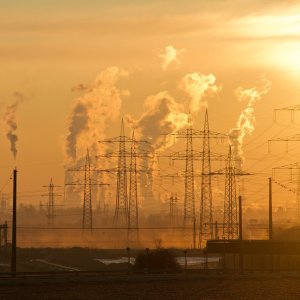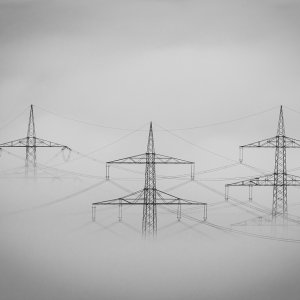
Uncertain Outlook, Opportunities in the Electricity Market
 By Cas Biekmann | Journalist and Industry Analyst -
Mon, 05/17/2021 - 15:20
By Cas Biekmann | Journalist and Industry Analyst -
Mon, 05/17/2021 - 15:20
With the 2014 Energy Reform, the Wholesale Electricity Market (WEM) was created with a clear objective: to create an efficient, competitive and cost-effective wholesale market. It was positioned at the center of Mexico’s modernizing energy sector to attract investment and cut energy prices to favor the country’s development. But backed by popular support, President Andres Manuel López Obrador has tried to implement a different vision, focusing on public power over private participation. Where does the WEM stand within this environment? MBN experts outline their views on the current state of the electricity market, what its future could look like considering current developments and what is necessary for further development.
What is the WEM?
Participants fall into various categories. Generators are companies that produce power. Meanwhile, qualified users are off-takers, the end users of the energy that need to report a demand of at least 1MW. Instead of receiving their electricity directly from power producers, sourcing goes through qualified suppliers. These are companies that buy electricity from the WEM and then sell it to qualified users. Another key player in the WEM is the basic service supplier that provides electricity to small-scale users, such as residential users. In Mexico, state utility CFE competes as a service supplier against just one minor player. Finally, there are exempt generators that produce energy through small power plants below the 0.5MW threshold, which are part of what is known as distributed generation (DG). All the energy generated in the market is managed and dispatched by SENER’s grid operator CENACE, which uses the wholly CFE-owned transmission and distribution network. Private power producers do construct and operate interconnection points with the state-owned network.
Every participant in the WEM needs to either register or receive permits from CRE if their operations go beyond the DG threshold. CENACE’s latest figures, published in May 2021, show report two basic suppliers, 53 qualified suppliers, 109 generators, 21 non-supplying commercializing entities such as natural gas suppliers and CFE as the only so-called intermediation generator. Deacero is the only qualified user to also actively participate in the market. This means the company has a minimum demand of 5MW and an annual consumption of at least 20GWh, giving it the right to participate fully without having to go through a qualified supplier. Nothing stops companies from being involved in multiple sides of the WEM through different entities, however. Independent power producers such as Northland Power and Mitsui operate both as generators and qualified suppliers, for example.
“There are several options available for qualified users in the electricity market. The number of possibilities can be a bit dizzying, so we have to work to advise on the most optimal solution,” said Lilian Alves, Director of Strategic Planning at Mitsui & Co. Power Americas, at Mexico Energy Forum. The previous legal framework, referred to as legacy contracts under the new framework of the Electricity Industry Law (LIE), already allowed for energy self-supply, renewable or otherwise. Permits and contracts under this scheme continue to exist. Under the LIE’s WEM, two main options present themselves: power purchase agreements (PPAs) focused on longer-term contracts and the electricity spot market. Even though the spot market can offer attractive prices, purchasing and selling energy at the last moment at a continuous basis might prove challenging. Therefore, commitments in the form of PPAs going from a few years up to over a decade can offer the win-win situation generators, suppliers and off-takers are looking for. At the end of the day, it comes down to the risk-appetite of those involved.
Changes to the WEM
Analysts are often quick to point out that the break from the previous policy that the López Obrador administration represented is neither surprising nor unique. Nevertheless, the reorientation from favoring as much private participation as possible back to a central role for the public sector in the energy sector appears more impactful when zooming in past the macro level. The government’s lingering efforts to prioritize CFE power plants over private ones, even if they deliver costlier and dirtier energy, have shocked the competition-driven mindset of private players in the WEM. Head of CFE Manuel Bartlett and President López Obrador often pointed toward the issue of the reliability of the grid, weakened by thousands of MWs of renewable energy for which they lamented that no backup was provided. “Add this to a shift in energy policy, reduced demand due to the pandemic and a lack of investment in the transmission system and you have the perfect cocktail to alter your dispatch drastically toward favoring reliability over economic dispatch, for instance,” said Casiopea Ramírez, Partner at Fresh Energy Consulting, to MBN. Measures aiming to effect a change in the dispatch have been met with amparos, however. The latest change to the LIE passed through Congress and will be reviewed by the Supreme Court.
According to PRODESEN, CFE and other permit holders have installed just over 86,000MW, 30,257MW of which comes from clean sources, including wind, solar and cogeneration, among others. From the total, 24,238MW comes from private power producers. The last long-term energy auction, where private players developed clean energy to be contracted by CFE, ended years ago. A potential fourth auction was cancelled soon after López Obrador took power. Nevertheless, capacity stemming from the auctions is still entering into operation today. This creates a dynamic of oversupply in the electricity market, says Diego Blumenkron, Director of Sales, Northland Power Energía. “The market is telling us it does not need more capacity additions right now, which is among the reasons we have low prices today. We will see this situation prevail for at least the next three years. Demand is not growing that fast, after all,” he added, noting that the pandemic slowed down the growth of energy demand significantly. Low prices mean that generators are especially inclined to keep their operating costs down as much as possible. For qualified suppliers, a lack of demand demonstrates to be similarly challenging. But for off-takers, low prices present a wonderful opportunity for at least the near future.
Hans Kohlsdorf, Founding Partner of Energy to Market, explained to MBN that the balance is very much tied to specific nodes in specific regions. “We still see important regional differences between supply and demand of electricity. In general, there will still be excess of supply in northern states of the country,” he said, pointing out the opportunities for off-takers in that area. In other regions, more capacity would still be welcome. “The central and southern regions offer great opportunities for new generation plants,” Kohlsdorf said. Planning where to develop and what technology to use would be crucial for renewable developers, he added.
But as Blumenkron suggests, the benefits of the WEM will not last if the pipeline of new renewable energy projects runs dry. “If CRE does not release more permits, we will experience a shortage in the supply of renewable energy in a few years,” warned Sean McCoy, Director of Energy Services for Mexico at Edison Energy, at Mexico Energy Forum. For any market, this would spell disaster. “Either way, the market needs to attract more liquidity, capital and capacity no matter what the laws and regulations are,” confirmed José Luis Pérez-Arenas, Managing Partner at Qenergy, in an MBN interview.
Overall, the outlook can indeed seem a bit grim compared to what was predicted in the past. “Our hopes and expectations for the Mexican WEM are few in terms of its evolution,” acknowledged Angie Soto, Director General at Nexus Energía. Nonetheless, by improving the current environment the market might just hit new heights. Migrating more potential off-takers to the qualified user scheme, for instance, could increase the interest in and the power of the WEM.
If off-takers can be convinced to enter the WEM, low energy prices could even be driven up because of a lack of renewable supply, explained María Jose Trevino, Director General of Acclaim Energy, to MBN. “Interest to migrate to the WEM continues to grow based on a need to control budgets and reduce carbon emissions by contracting renewable supply. We are also supporting off-takers in self-supply contracts to migrate to the WEM due to regulatory uncertainty and opportunity costs. The more self-supply off-takers migrate, the less supply in the WEM. Thus, this could drive prices up, especially if the focus is on the currently operating renewable energy generation,” she said.
For the market to grow, utility-scale projects are not the only option, Kohlsdorf told MBN. “The future of the electricity market will see a very vibrant and active interaction between smaller distributed generation plants, surplus electricity generated by on-site renewable or cogeneration plants and consumers that require a flexible and adaptable energy supply,” he said. But for this to happen, standards such as those prescribed by the grid code need to be enforced strictly. “The market needs significantly stricter interconnection norms, especially for renewable generation to assure a higher quality energy supply. Current standards, all the way from roof top solar to utility scale power generation are well below par compared to international norms,” he said.















